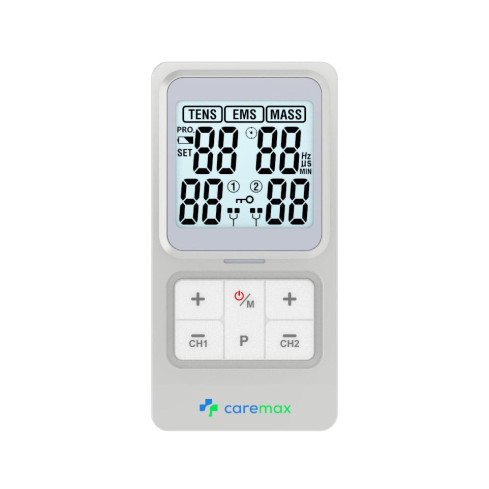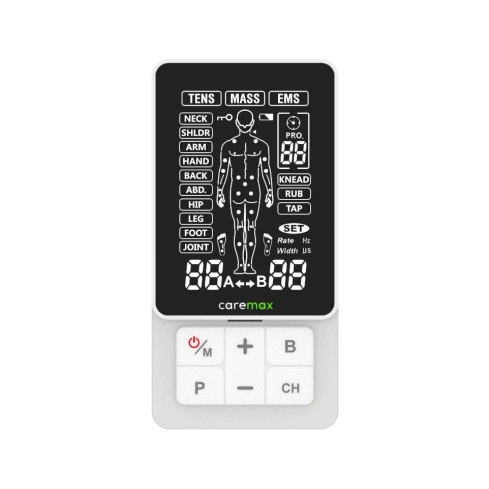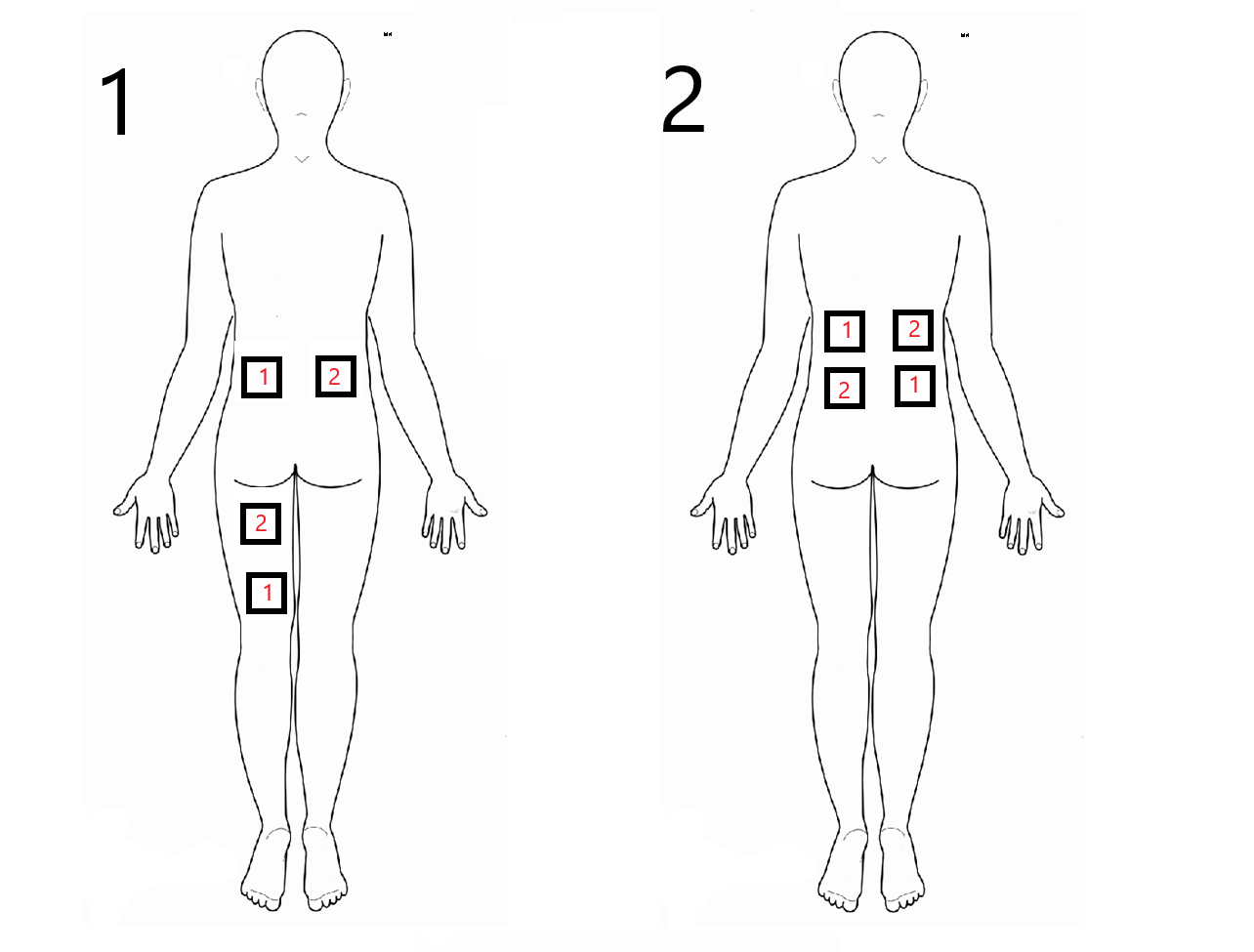Product added to cart
- Home
- TENS & EMS
- Using TENS Machine for Sciatica Pain Relief
What is sciatica pain?
Sciatica pain refers to any discomfort or sensation caused by issues with the sciatic nerve. The sciatic nerve starts in the lower back and travels down the leg [1]. This can cause a range of symptoms, including pain, sensory issues, and even inhibiting movement. Typically, the hallmark of sciatica is the location of these symptoms, which include the glutes, hamstrings, calves, and foot/ankle area.
What causes sciatica pain?
Any disturbance to the sciatic nerve can lead to sciatica pain [1]. This can range from the nerve being pinched to being compressed against the spinal column. Typically, the more severe the problem, the more severe the symptoms. Injuries to the sciatic nerve, including disc herniations, stenosis, or piriformis syndrome, can irritate, inflame, and even damage the nerve.
Range of Sciatica Pain Symptoms
There are a range of sciatica pain symptoms that can vary depending on the type of injury, its severity, and the overall health of the person affected. These symptoms can include [2]:
- Sharp and shooting pain (particularly down the glutes, back of the thigh, calf, and ankles/feet)
- Tingling and numbness
- Weakness down the leg
- A burning sensation
- Difficulty with specific movements (e.g., bending over, etc.)
Traditional Treatment Methods for Sciatica
Currently, there is not one specific treatment that helps everyone with their sciatica. It depends on a range of factors, including the severity and cause of the sciatica. Typically, first-line treatments include physiotherapy, rehabilitation, medication, massage, and stretching. In more severe cases, steroid injections and even surgery may be required.
What are the stages of sciatica recovery?
Sciatica recovery can be separated into four distinct stages, which include:
- Pain management and protection: During this stage, the priority is to focus on reducing pain and allowing the body to recover. A crucial component is to reduce activities that aggravate the pain (e.g., bending over, running, etc.). Additionally, there are also other specific treatments that can help ease the pain while the body recovers, including massage, heat, and tens machine pain relief.
- Rehabilitation: The next stage is to perform movements that the body can tolerate and help with injury recovery. These can include bodyweight movements, stretches, and pilates.
- Return to Normality: Once the sciatica has recovered, you should be able to return to a normal lifestyle, including going back to work, performing duties around the home, and doing gentle exercise.
- Prevention: Once the sciatica pain has settled, you can implement lifestyle changes to help prevent this condition from occuring, including regular exercise and modifying your daily routine.
What is a TENS machine, and how can it help with sciatica pain relief?
A TENS machine is a device that delivers electric current through the skin to the nerves. These devices can deliver a very specific electrical current that can block the nerves that send pain signals to the brain. This can be a very effective way of relieving sciatic nerve pain without the use of medication [3].
What's the best way to use a TENS machine for sciatica pain relief?
The best way to use the TENS machine is to assist with pain relief in all stages of sciatica, particularly in the earlier stages when it is most painful. It is most effective when combined with active management strategies, such as exercises and stretches.
Here are the best practices for using a TENS unit
-
Position of electrode pads for sciatica pain
The position of the electrode pads will depend on the location and cause of the sciatica. However, common placements include 1) from the lower back to the back of the thigh, where symptoms are often the most intense or 2) around the lower back region, where the sciatica can often originate. These have been depicted in the charts below.
-
Setting the TENS Mode for Sciatica Pain
There are several settings that impact the best way sciatica pain relief is treated using a TENS machine. These include the placement of intensity, frequency, and pulse width. These settings can be modified before the treatment. However, the intensity (mA) must be modified during the treatment so that the user can tolerate it without feeling irritable. Optimal settings for sciatica pain relief will be explored in the sections below.
-
Setting the Pulse Rate (Frequency) for Sciatica Pain
The pulse rate (measured in Hz) details the number of electrical impulses delivered within a given timeframe. Research has shown higher frequencies around 100–150 Hz to be effective in helping reduce sciatica pain conditions [4].
-
Setting the Pulse Width for Sciatica Pain
Currently, more research is required to determine the importance of pulse width for sciatica pain relief. However, research has indicated a pulse width of 50–80 s to be effective for nerve pain relief [4].
-
How Often Should You Use Your TENS Machine for Sciatica Pain?
Typically, TENS machines should be safe to use regularly to treat sciatica pain, unless you experience side effects. Research has indicated that 15-minute sessions for five days a week are effective for sciatica pain relief [4]. Speak to your appropriate healthcare provider about how often you should receive treatment, depending on your circumstances.
Using Caremax TENS machine for Sciatica Pain Mangement
We provide a comprehensive packaging solution for Sciatica Pain Relief. Discover the most sought-after products below essential for effective TENS therapy treatment.
 |
 |
| Caremax 2.0 Classic TENS machine | Caremax 2.0 Pro TENS Machine |
Other Home Exercises to Relieve Sciatica Pain
It’s important to understand the reason for your sciatica pain symptoms. Performing the incorrect home exercise programme can sometimes worsen symptoms. Common exercises that are recommended to relieve sciatica pain symptoms include:
Where and when not to use TENS machines
While TENS machines are generally considered safe for use, there are specific situations in which their application should be avoided. It is important to exercise caution and refrain from using this device under the following circumstances [5]:
- On skin that is excessively damaged, including wounds or grazes.
- In proximity to sensitive regions, such as the genital and ocular areas.
- Near critical areas like the neck, brain, and chest.
- During pregnancy.
- Over areas where clotting or thrombosis is suspected.
- On sites affected by infections.
- In the vicinity of cancerous growths or tumours.
- If you have epilepsy, unless explicitly approved by your doctor or neurologist,
- On areas with minimal or no sensation.
- If you have any implanted medical devices, such as a pacemaker or neurostimulators.
- When dealing with individuals who cannot provide consent for the treatment.
Are there any risks of side effects when using a TENS machine?
The most frequently encountered side effects are skin irritation and unusual sensations in the area being treated. When a TENS unit is used incorrectly, in places that aren't safe, or on people who aren't suitable candidates, more serious side effects can occur. Less common side effects include skin rashes, increased pain, seizures, interference with implanted medical devices, strokes, blood clots, skin damage, and burns [5]. If you notice any side effects, it's crucial to stop treatment and consult your doctor for advice.
References
- Australian Institute of Health and Welfare. (2023). Back Problems. https://www.aihw.gov.au/reports/chronic-musculoskeletal-conditions/back-problems
- Better Health Channel. (2015.). Sciatica. https://www.betterhealth.vic.gov.au/health/conditionsandtreatments/sciatica
- Kolu, E., Buyukavci, R., Akturk, S., Eren, F., & Ersoy, Y. (2018). Comparison of high-intensity laser therapy and combination of transcutaneous nerve stimulation and ultrasound treatment in patients with chronic lumbar radiculopathy: A randomized single-blind study. Pakistan journal of medical sciences, 34(3), 530.
- Divyasree, S., Kumaresan, A., & Vishnuram, S. (2023). Effect of Mckenzie lumbar extension exercise with TENS on lumbar radiculopathy. Biomedicine, 43(3), 1032-1035.
- University of Iowa Health Care. (2018). Pain Medicine Patient Education: Contraindication & Precautions for Commonly Prescribed Medications & Therapies. Retrieved from https://www.healthcare.uiowa.edu/marcom/uihc/pain_medicine/contraindication_precautions_best062018.pdf
Categories
- TENS & EMS (19)
- Latest News (41)
- Massager (2)
- Nebuliser (8)
- Skin Care (3)
- Period Pain Management (1)
- Fitness (2)
